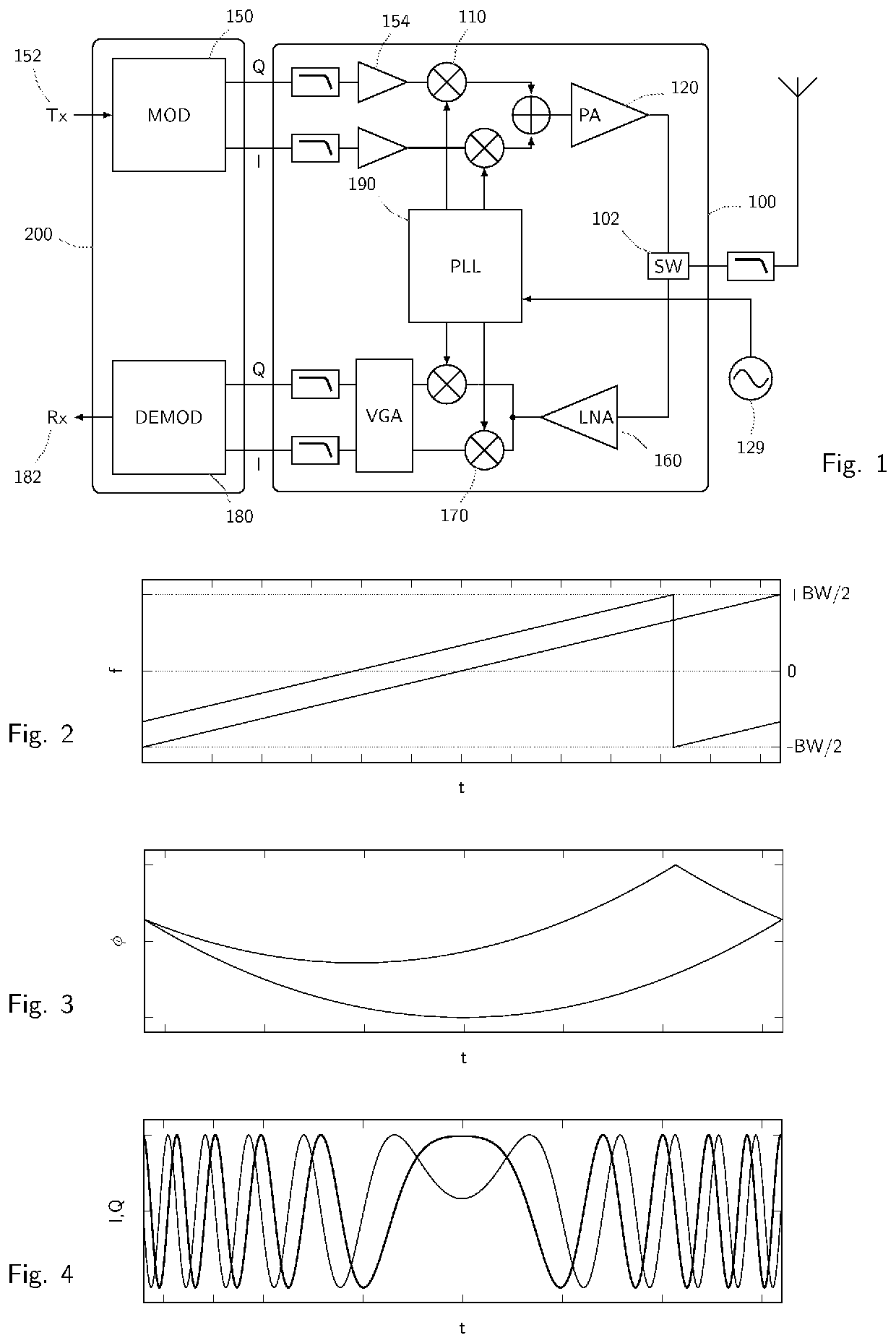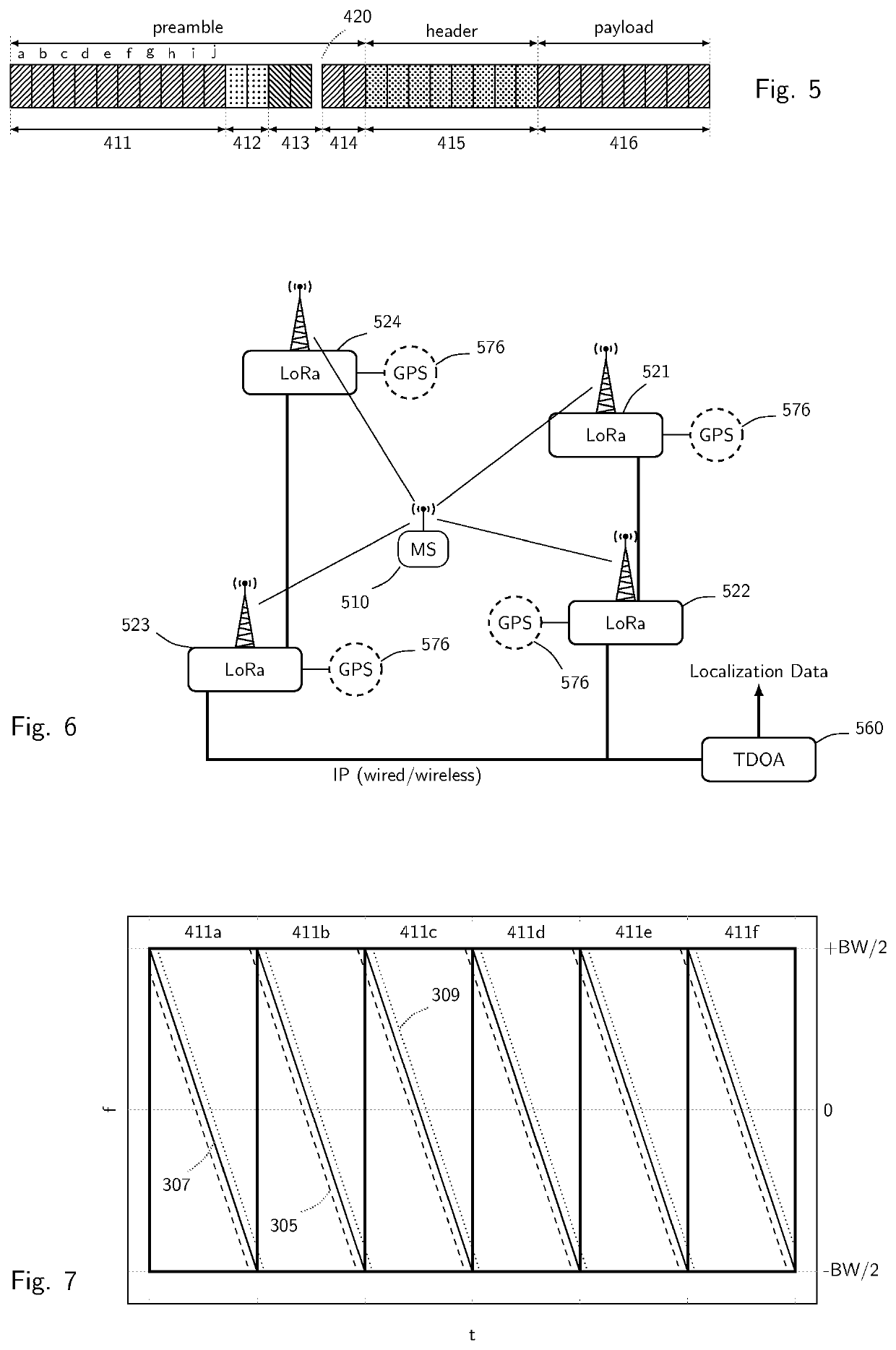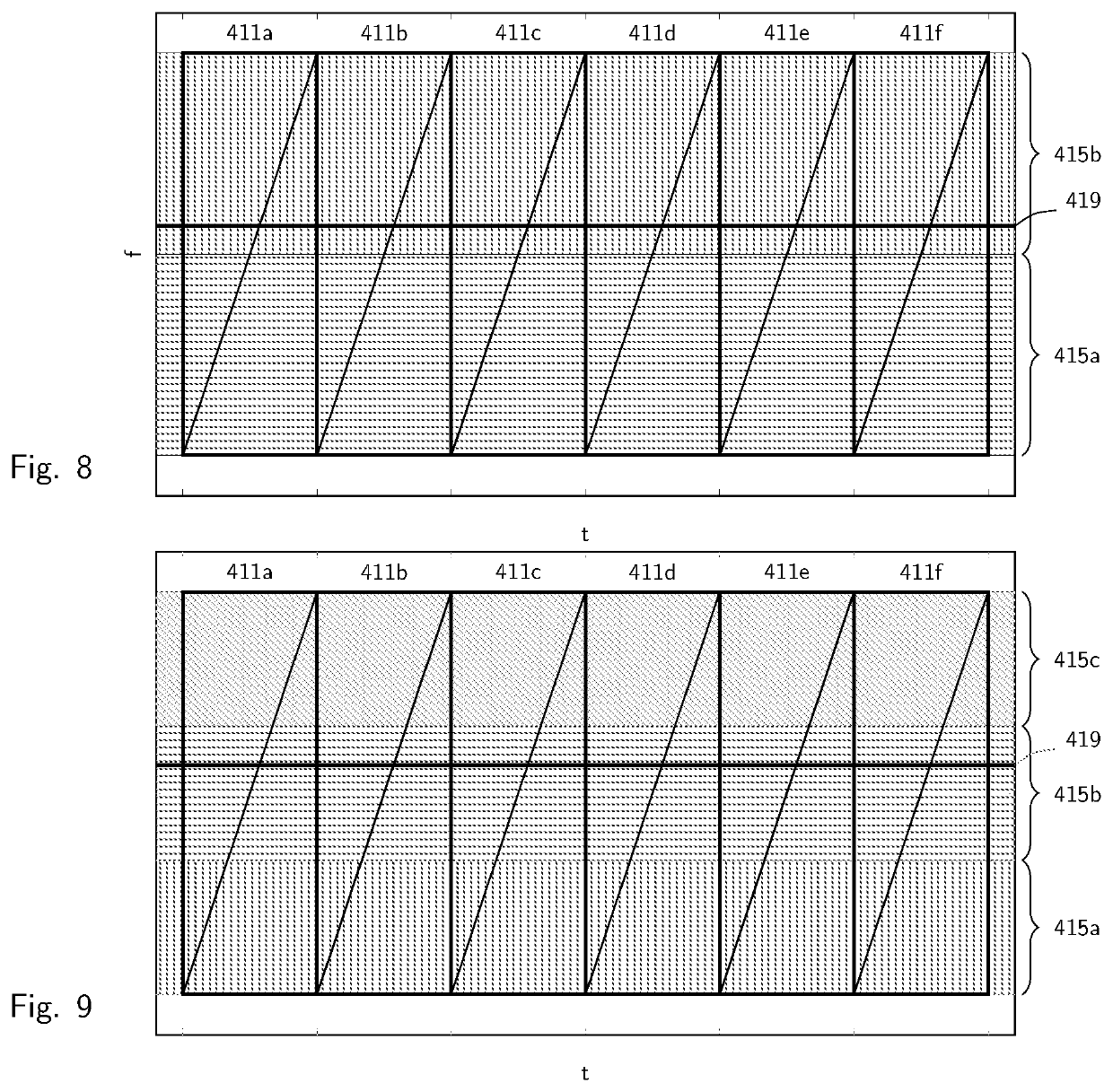Method and system of timing and localizing a radio signal
a radio signal and timing technology, applied in the field of method and system of timing and localizing a radio signal, can solve the problems of not being suited to the low-power range segment of the iot, considerable computing power, and still difficult indoor reception
- Summary
- Abstract
- Description
- Claims
- Application Information
AI Technical Summary
Benefits of technology
Problems solved by technology
Method used
Image
Examples
Embodiment Construction
)
Recall of LoRa Modulation
[0025]Several aspects of the chirp modulation technique employed in the present invention are described in European Patent Applications EP2449690 and EP2767848, which are hereby incorporated by reference, and will be reminded here summarily.
[0026]The radio transceiver that is represented schematically in FIG. 1 is part of a possible embodiment of the invention. It includes a baseband section 200 and a radiofrequency section 100. Concentrating on the transmitter part, the baseband modulator 150 generates, based on the digital data 152 that are present at its input, a baseband signal whose I and Q component are converted to the desired transmission frequency by the RF section 100 amplified by the power amplifier 120, and transmitted by the antenna. This architecture allows several variants and modifications without departing from the frame of the invention, and is a non-limiting example. For example, the transceiver could synthesize the polar components ampli...
PUM
 Login to View More
Login to View More Abstract
Description
Claims
Application Information
 Login to View More
Login to View More - R&D
- Intellectual Property
- Life Sciences
- Materials
- Tech Scout
- Unparalleled Data Quality
- Higher Quality Content
- 60% Fewer Hallucinations
Browse by: Latest US Patents, China's latest patents, Technical Efficacy Thesaurus, Application Domain, Technology Topic, Popular Technical Reports.
© 2025 PatSnap. All rights reserved.Legal|Privacy policy|Modern Slavery Act Transparency Statement|Sitemap|About US| Contact US: help@patsnap.com



